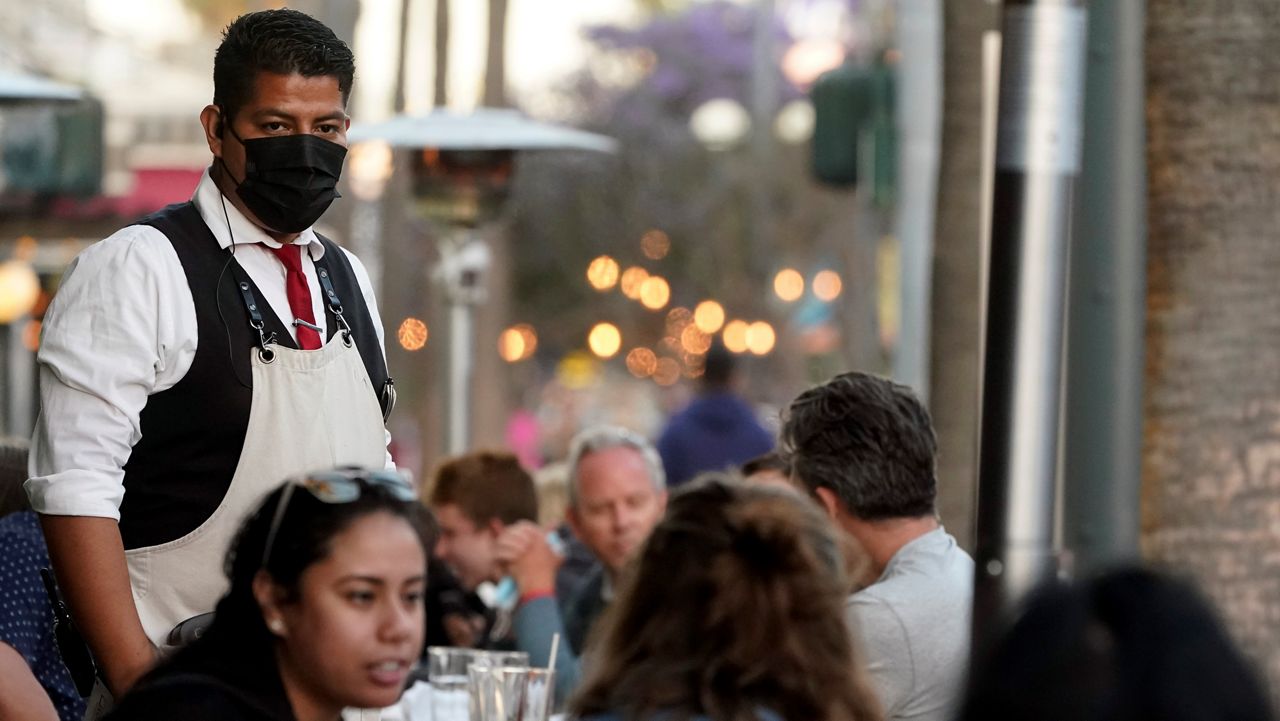CINCINNATI — Few businesses experienced the ups-and-downs of COVID-19 quite like those in the food and beverage industry.
What You Need To Know
- Social distancing restrictions in Ohio ended June 2, but many bars and restaurants struggle through re-opening process
- Grant programs, outdoor eating enhancements and carryout businesses kept many businesses afloat
- Staffing shortages and issues with the supply chain hamper many restaurants as they look to ramp up operations
From temporary shutdowns and an emphasis on food delivery, to being back at full capacity seemingly overnight — it’s been a dramatic year-and-a-half. And with staffing and supply chain issues still settling, it’s far from smooth sailing for many proprietors.
Yet with doors reopening, and masks (cautiously) coming off, there's a sense of tempered optimism in the air.
“Things are coming back and sales are picking up, and those are good things,'' said Chris Davis, co-owner and operator of Brew House bar and restaurant in Walnut Hills.
Davis is hopeful about his establishment's future today. Business is good, restrictions are lifted and people are starting to get the vaccine. Davis said he got his the first day he was eligible.
He didn't always have that outlook, though.
"It’s been a hell of an 18 months. I’m surprised we’re still here, if I’m honest," Davis said. "I was really sort of ready to hang it up a couple times. But we’re still here, at least at the moment.”
Like many local food and beverage establishments, Brew House faced its share of struggles during the pandemic. They made the difficult decision to shut down for about six months last spring.
“We didn’t think it was worth it to try to battle through it at that point," Davis said. "We didn’t think it was safe enough for people at that time. And it would have been difficult to operate under those conditions.”
Adapt to survive
Brew House wasn't alone in its struggles. Various bars and restaurants faced similar decisions about their operations over the course of the pandemic.
For Kathy O'Connell, that meant delaying the opening of her new bar, Copper & Flame, in Over-the-Rhine.
O’Connell said crews completed construction in early May. But she waited a few weeks to open until the day restrictions ended, June 2.
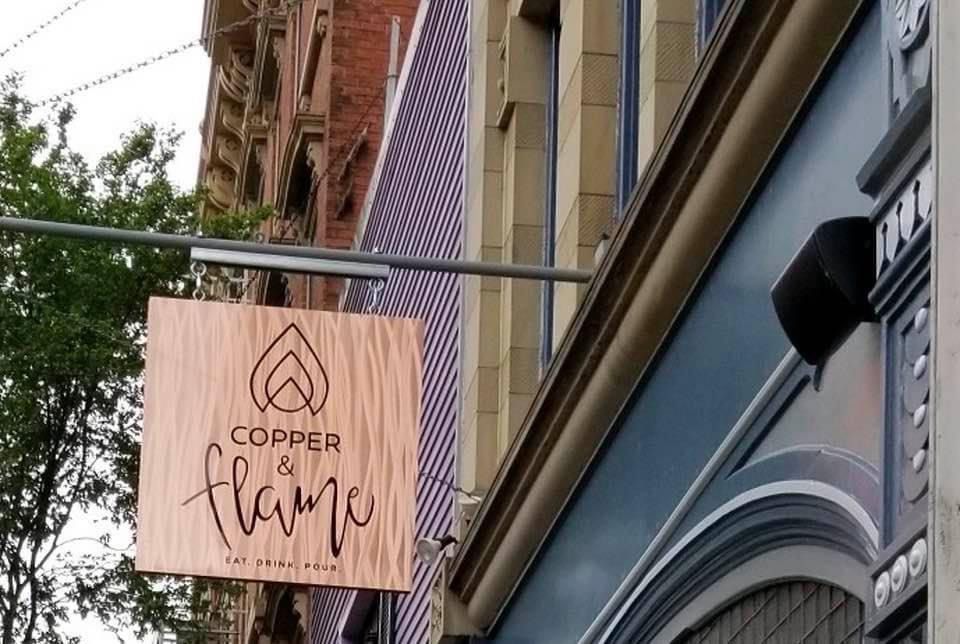
One of the reasons for that decision is the unique quirks of Copper & Flame.
It’s a self-pour bar, requiring patrons to use communal taps to pour their own beer. The space also has a shotgun-style layout making social distancing difficult, O'Connell said.
"We absolutely have done everything we can to ensure taps and glassware are always sanitized but we chose to wait to open and continue construction and updates until we felt the world reopened a bit,” she added. "It gave us time to ensure everyone was safe, vaccinated and comfortable working in the public again.”
Waiting to open also gave her staff a chance to make a better, more personal first impression with guests, O’Connell said.
"Being self-pour, during a pandemic and distancing from guests, and wearing masks would have been hard for our model,” she said. "We feel we did the right thing by delaying."
Other spots, like Nine Giant Brewing in Pleasant Ridge, remained open throughout the pandemic. But business partners Brandon Hughes and Mike Albarella had to make significant changes to ensure that happened.
The brewery and restaurant switched from bar-only service to table service to accommodate social distancing. They also gave up a fair amount of dining space and seats to meet necessary requirements.
To compensate for those losses, Hughes said they added a waitlist for the first time. They also created a carryout option.
Takeout was an important tool for many bars and eateriers. Especially after Ohio made it legal to sell to-go cocktails with a meal.
Nine Giant also made regular changes to its menu, including rotating specials, to keep guests interested.
Hughes said the neighborhood ate it up. Literally.
"We fought with everything we had to make sure we came out on the other side of this," he said. "We survived because of our loyal fans and support of the community in Pleasant Ridge."
Endless community support
Davis credited several pandemic-created relief funds for helping Brew House stay afloat.
"It really could have been a lot worse," he said. "It would have been a lot worse if it weren’t for the support of the community. The bailout programs we took part in were a huge help."
The Small Business Association hosted one. So did the James Beard Foundation, which Davis said Brew House received.
Brew House also won a Taste of Cincinnati All Winter Long grant from the city of Cincinnati and the Cincinnati USA Chamber Foundation.
That program gave away $5,000 and $10,000 grants to non-chain bars and restaurants. Food trucks, food windows and food vendors at Findlay Market were eligible for smaller grants.
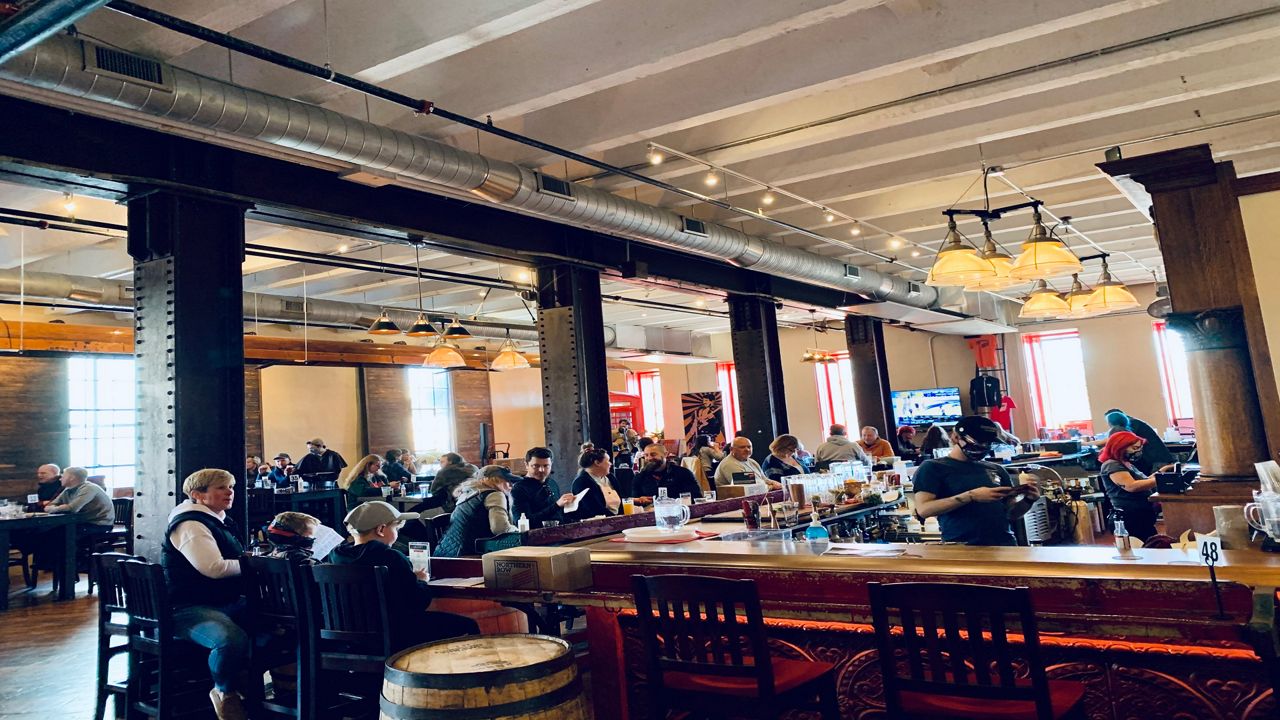
The goal was to help the businesses survive the oft-difficult winter dining season, which was only made worse by the pandemic.
In total, the Taste program gave $4 million to 272 Cincinnati bars and restaurants last December.
There will be another $4 million in Taste grants, from CARES Act money, later this summer. Davis said he plans to apply.
“The restaurant industry is a vital part of our community," said Katie Eagan, the chamber's VP of government affairs. "With initiatives like Taste of Cincinnati All Summer Long, we’re hoping to help restaurant and bar owners rebuild through this transition time.”
The chamber also worked with Hamilton County on the 'Get Your Cincy On', an eight-week, $2 million flash campaign to attract tourism by promoting local attractions that were safely reopening.
Another major player was the Cincinnati Center City Development Corp. (3CDC), which injected $677,000 of cash flow into 284 local businesses through Its Cincy Card Connection program, according to spokesperson Joe Rudemiller. For each gift card purchased, a sponsor bought another gift card in the same amount from a similar business and then sent it to the purchaser.
"Small businesses are the lifeblood of our urban core, and it was critically important that we all did everything we could to help them survive this incredibly difficult past year," Rudemiller said.
'Streateries' and outdoor dining
Many bar and restaurant spaces in Cincinnati's urban core are on the smaller side. Only a handful had sizable patios prior to the pandemic.
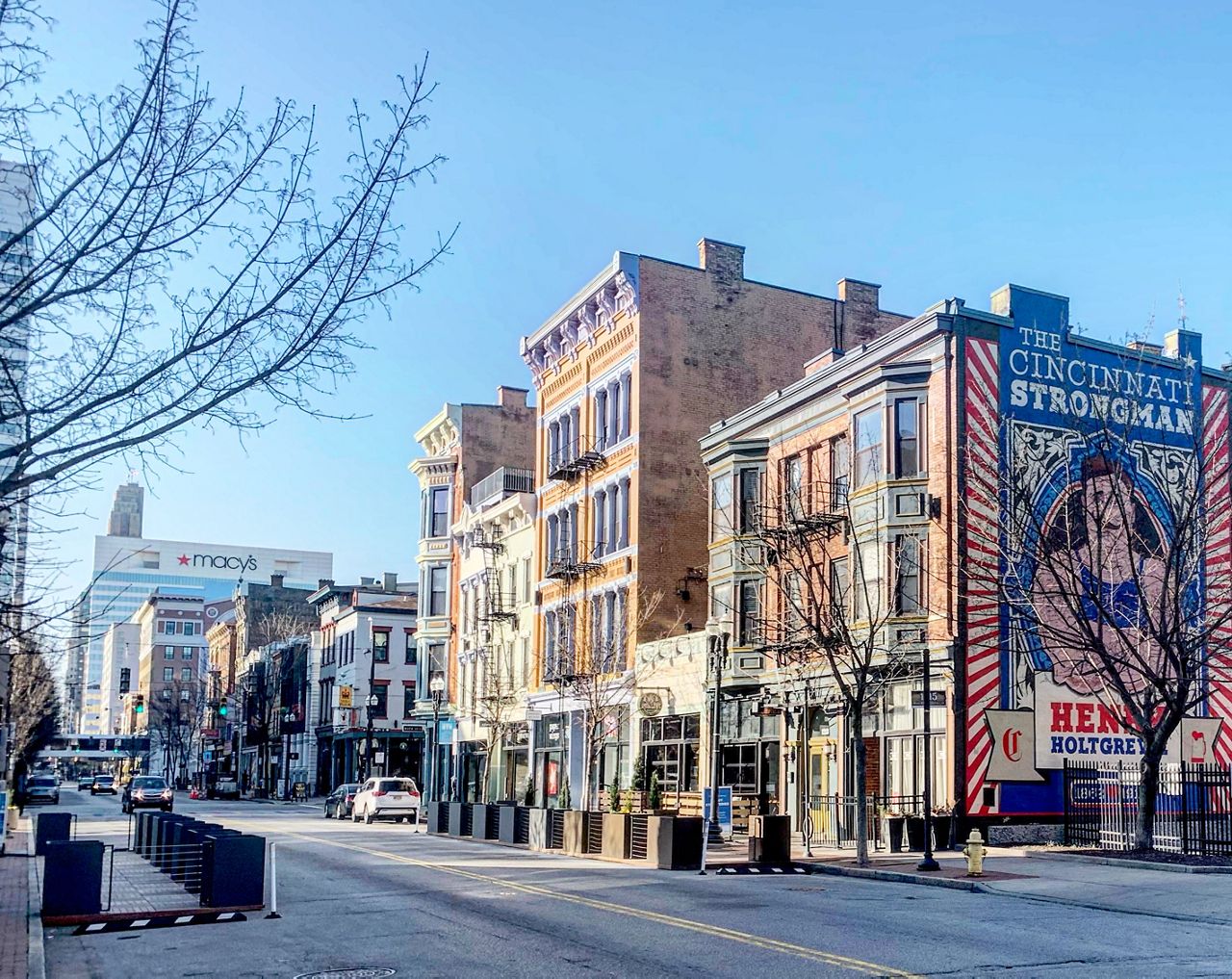
The addition of social distancing restrictions made it difficult for some of those without a patio to remain open.
To address that issue, the city of Cincinnati partnered with 3CDC and a host of donors to create "streateries,” or expanded outdoor dining areas, throughout downtown.
The idea stemmed from a temporary program in March 2020.
Partners spent $2.2 million installing various traffic engineering solutions to make room for larger patios for businesses. Work included sidewalk expansions, adding bump-outs and partial street closures.
Most participating businesses received decorative wooden parklets to place in the street outside their bar or restaurant. They feature planters and railings to make it safer for diners.
The first round of streateries benefitted about 70 businesses throughout three downtown neighborhoods. The city will spend an additional $2 million of American Rescue Plan funds to help another 30 businesses.
And then there's The DORA at The Banks. Plans for the outdoor entertainment district were in the works long before the pandemic. But, when it launched in March, it breathed much-needed life into the riverfront and the businesses that call it home.
Business is up, but challenges continue
Community support and grant dollars aren't curing all the problems felt by bars and restaurants, though. Supply chain issues and staffing shortages continue to be a major challenge for bars and restaurants across the country.
Right now, the Cincinnati region is at 80% employment in the food service industry compared to where it was just ahead of the pandemic, according to the Cincinnati Chamber. The data shows Cincinnati is slightly lower than the national average.
The low-point for staffing was under 60% in April 2020.
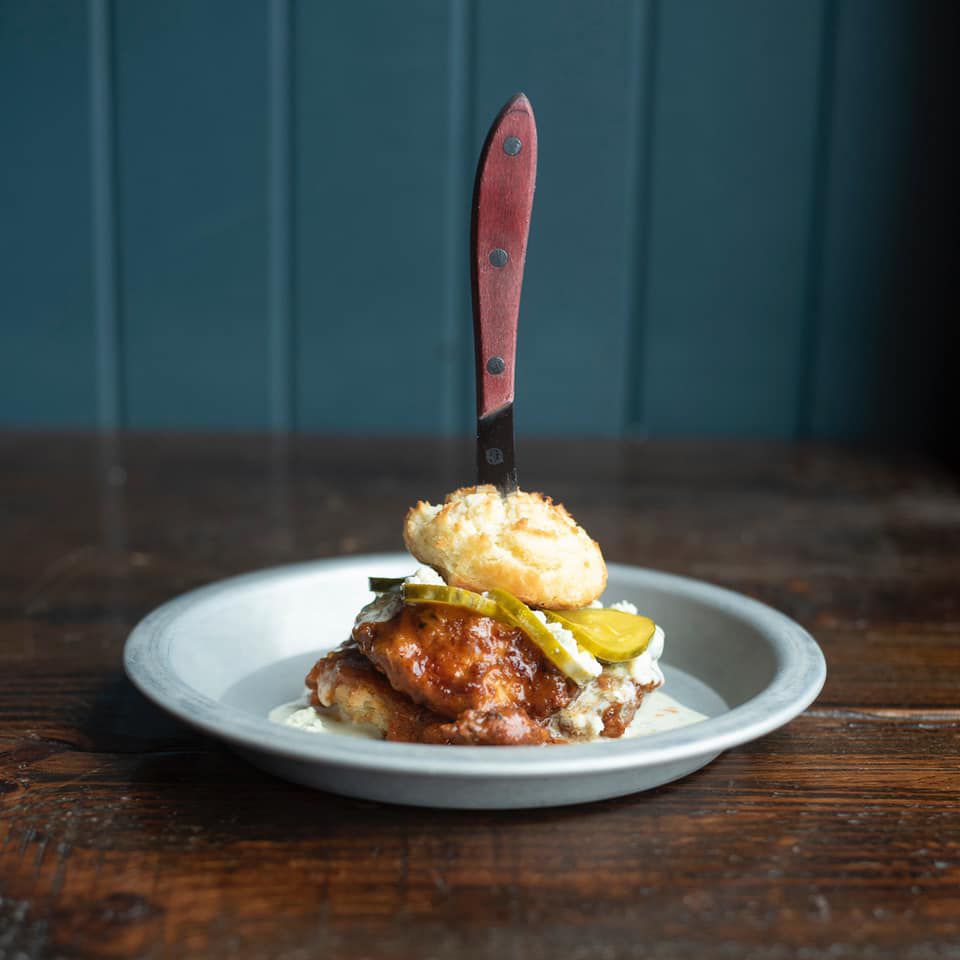
While the numbers have steadily gone up, the current 20% staffing shortfall is hurting many restaurant and bar owners.
For some, a lack of staffing means adjusted work hours. For others, like Chef Christian Gill, it means changing their menu.
"There isn’t a light at the end of the tunnel currently. Labor shortages are creating new hurdles that are difficult to navigate as the demand for dining increases," said Gill, the chef and owner of Boomtown Biscuits & Whiskey in Pendleton.
Gill said COVID-19 hardships and the current staffing situation necessitated "backup plans for backup plans." It even led him to change the recipe to his signature "classic laminated punched" biscuit to a more-efficient-to-make buttermilk biscuit.
"It takes a lot (time and work) to make the classic biscuit in large quantities and the only thing that kept us from completely drowning was the change to a buttermilk drop biscuit," he said. "Same ingredients, different approach."
It's not as simple as people not wanting to work, though, according to a Wall Street Journal report. There's a mixture of factors at play, ranging from the availability of childcare to health risks to, yes, pay rates.
Those same factors also play a role in the supply chain issues Davis is experiencing.
Even though sales have picked up in the last two months, expenses have gone up "significantly," he said. Supply chain issues have become a "considerable hassle that we’re running around on."
Rising price of meat, shipping costs and increased demand all play a role.
Despite the challenges, Davis said he has his health and his business is open so it's hard to complain, especially after everything everyone has gone through.
"But sales are better, sales are picking up and things are looking up -- so far so good," he said.



